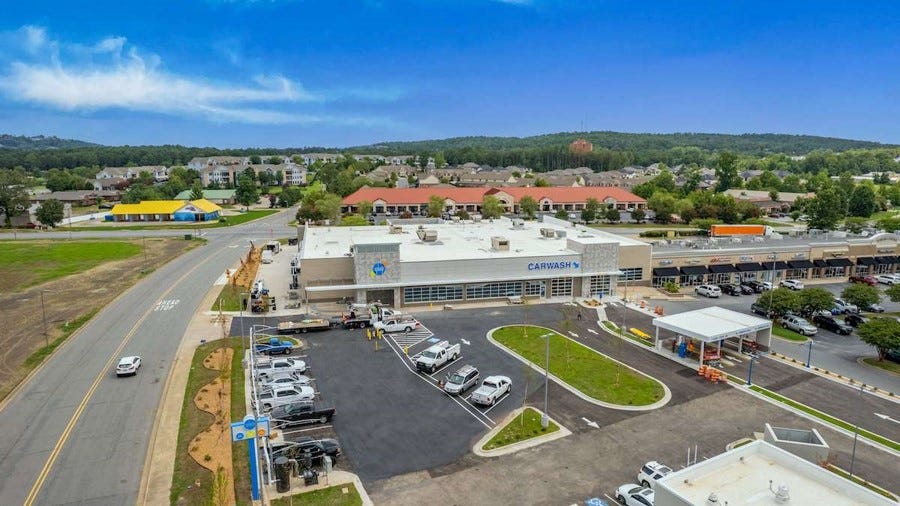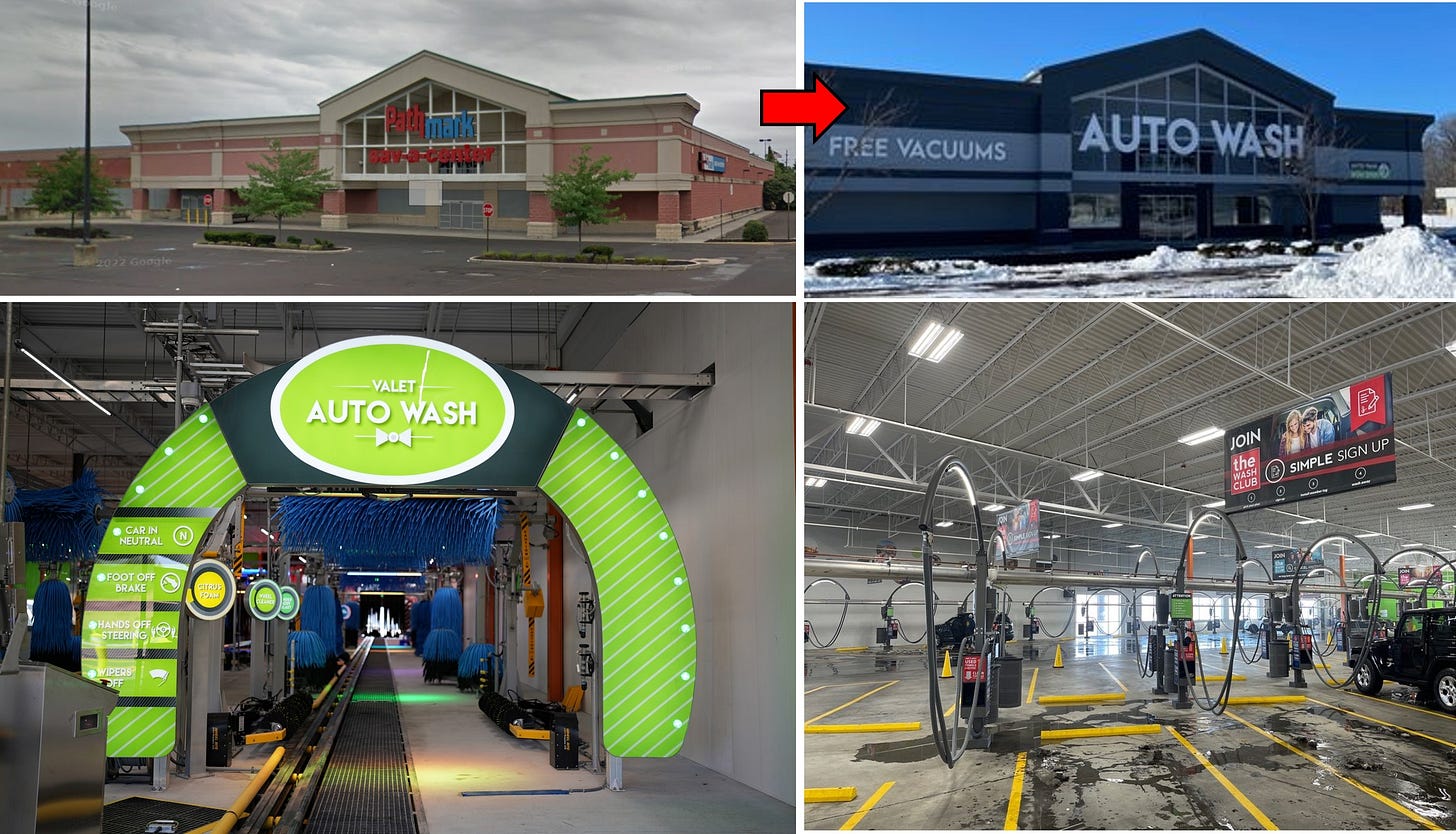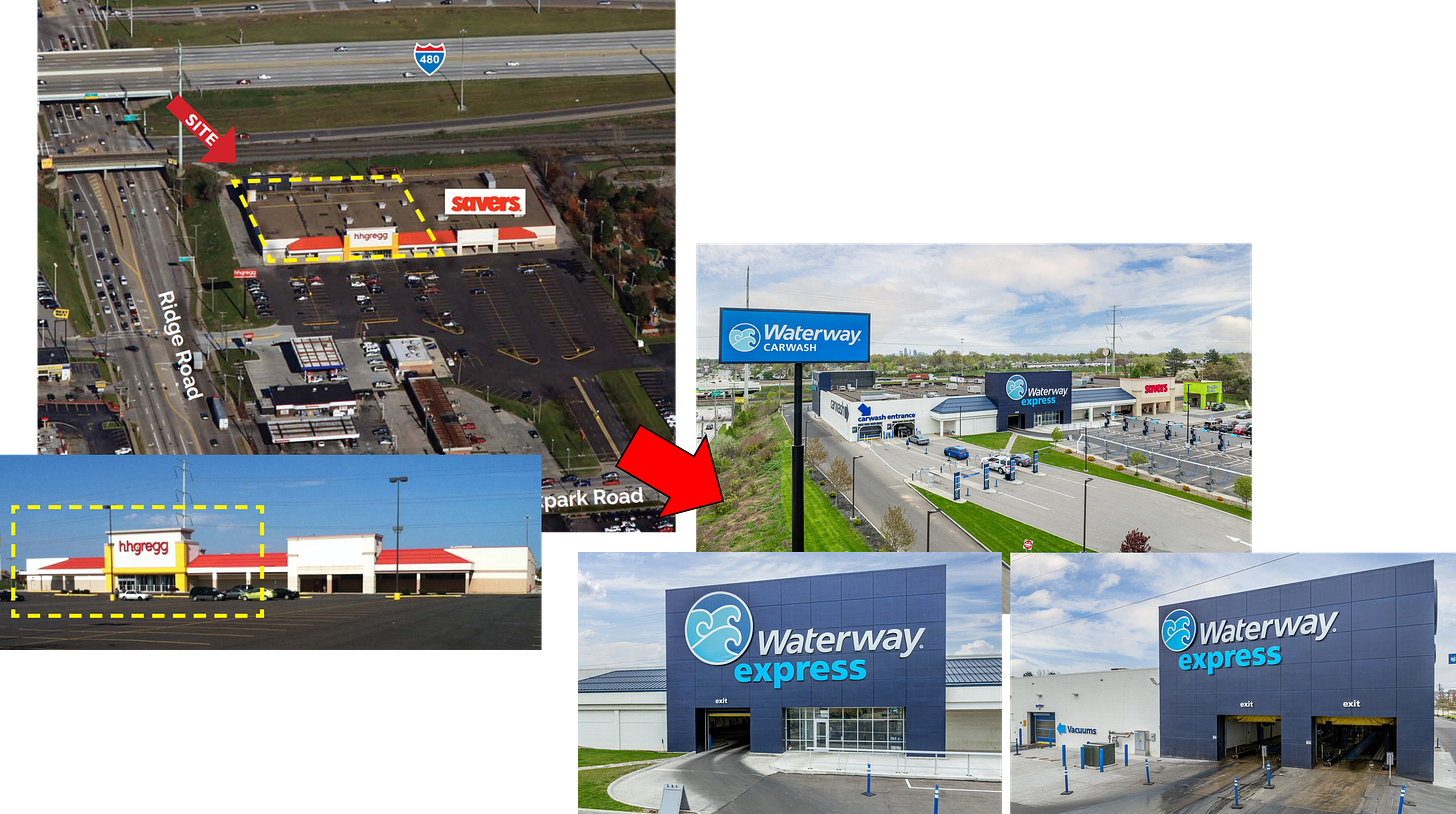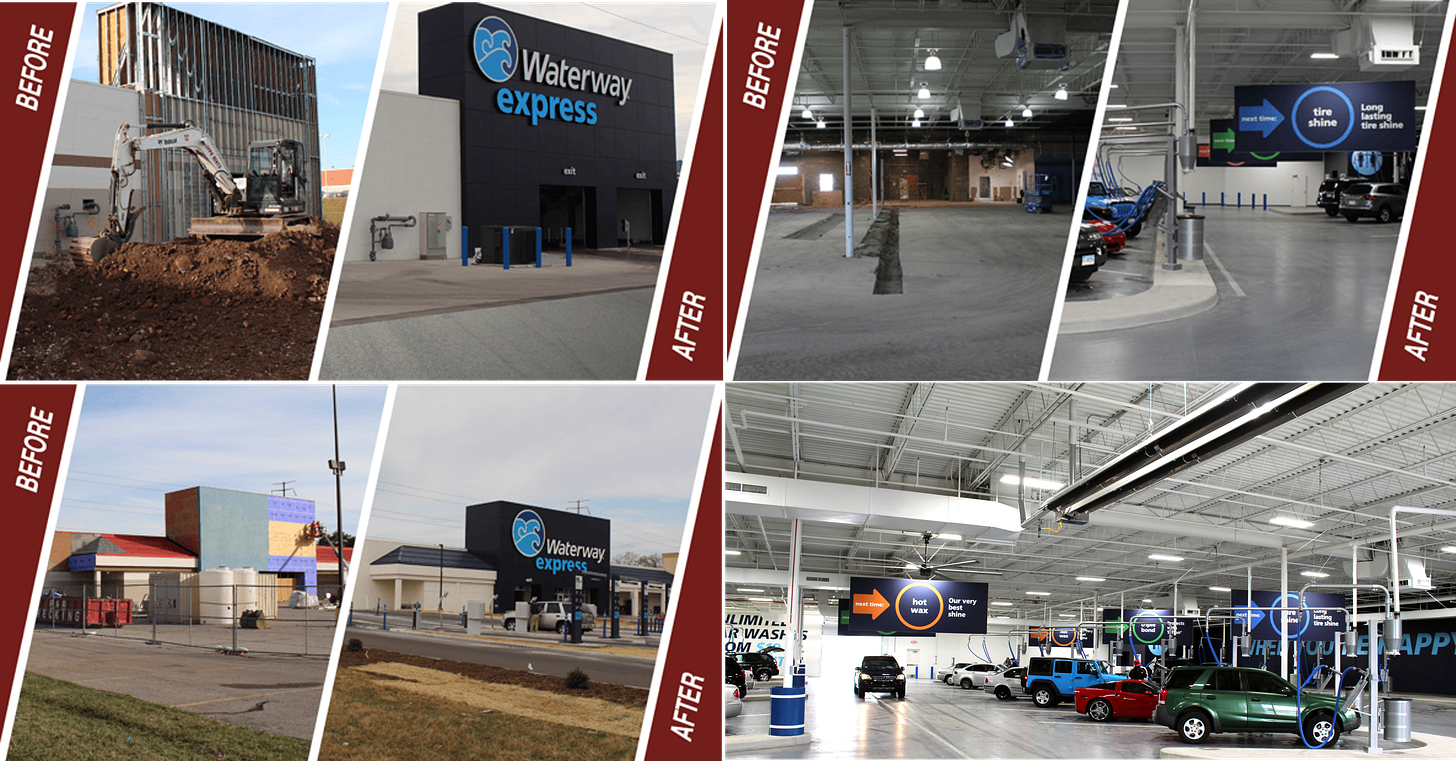These Former Grocery Stores Have Been Converted Into Big Box Car Washes
Multiple indoor car washes have been created via the adaptive reuse of vacant Big Box buildings that previously operated as grocery stores
When the Walmart Neighborhood Market grocery store in Maumelle, Arkansas closed, many assumed that a retail use would replace it.
Perhaps a Big Box retailer or maybe even another grocery store.
After all the ~35,000 square foot space was well-located and the anchor to the Maumelle Towne Center retail strip mall.
But the building was instead backfilled with a use that most did not expect:
An indoor car wash.
Splash Car Wash, a ~30 unit, Arkansas-based car wash chain, acquired the former Walmart grocery store located in the north suburbs of Little Rock.
Splash then hired car wash architects at A Plus Design Group Architecture to design a custom retrofit of the former Big Box retail space.
The result was a “European” style indoor car wash with two enclosed wash tunnels, bright LED lighting, indoor vacuum stations and even a kids play area.
Now the adaptive reuse car wash in the former grocery store building anchors the adjacent 35,000 square foot shopping center.
But this Splash Car Wash site is not the only grocery store-to-car wash adaptive reuse.
New Jersey-based Valet Auto Wash repurposed a vacant former Pathmark grocery store at the Franklin Hills Mall in Philadelphia into a car wash.
The 50,000 square foot former supermarket was permanently closed following parent company A&P's 2015 bankruptcy.
But today it is one of the largest car washes in the U.S. with side-by-side double car wash tunnels and more than 70 indoor vacuums.
Similarly the Waterway Express car wash located along I-480 in Cleveland is a repurpose of a vacant Big Box building with roots as a grocery store.
Cleveland-based general contractor Fortney & Weygandt took on the project to convert the ~30,000 square foot former hhgregg appliance store into an indoor car wash.
An entrance and multiple exits were cut out of the front and back of the building to allow for vehicles to enter the building and have the car wash performed entirely inside the structure.1
Additionally, 20 drive-up vacuuming and drying bays were added to the interior of the building.
While hhgregg had been the most recent pre-car wash tenant of the Big Box space, the building’s longtime use had been as a grocery store.
It was first a Rini-Rego Stop-N-Shop in the 1980s and 1990s and then was rebranded and operated as Giant Eagle for another decade after the two grocery chains merged in 1997.
While former grocery stores-turned-Big Box car washes are still the exception in the U.S. car wash market, more adaptive reuse could be on the way.
Enclosed car washes are popular both with consumers—who can vacuum their vehicles in a climate controlled setting—as well as municipalities that like how they result in less outside noise and odor.
Plus additional former grocery store real estate is expected to hit the market soon.
Just last month Kroger, the nation’s largest supermarket chain, announced plans to close at least 60 of its U.S. grocery stores.
Finally, the U.S. car wash market shows no signs of slowing down with compound annual growth of nearly 6% expected through 2031 and many more units expected to come online in the coming years.
So while it may make for an unconventional repurpose, the next best use of many vacant former grocery stores may just be as a car wash.
Picture credits to Fortney and Wygandt












I didn’t see that coming. Thanks for pointing it out! The photos are impressive, and I really appreciate how creative the leasing team was. I wonder about the advantages of having an indoor car wash for a retail property owner, especially how it impacts foot traffic and overall productivity. I bet something like that would be really popular in Canada. Very cool!